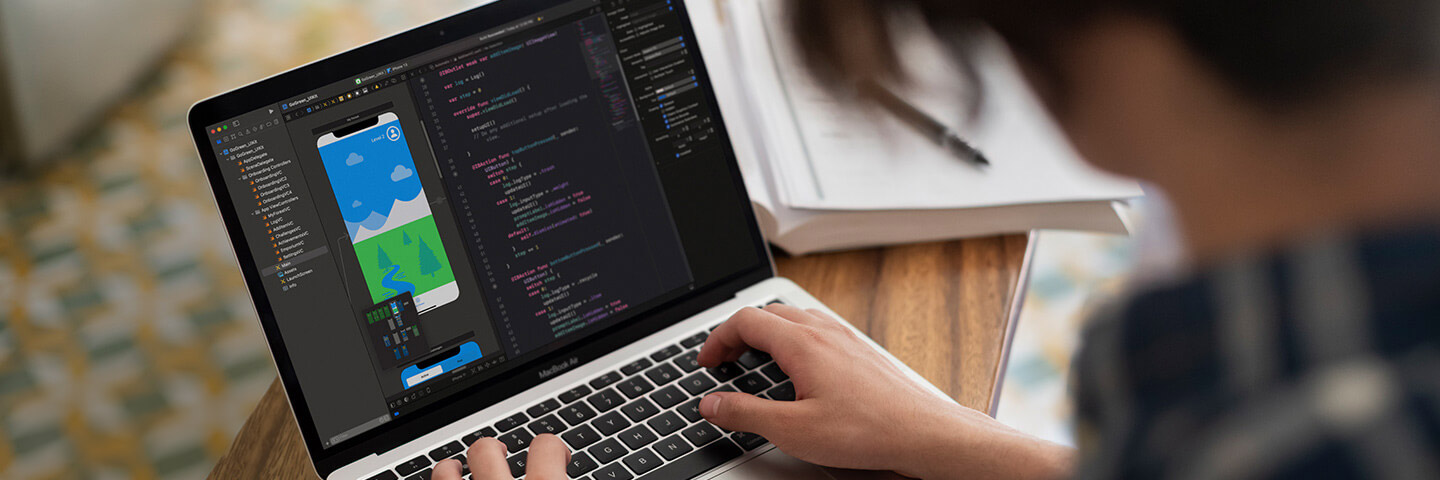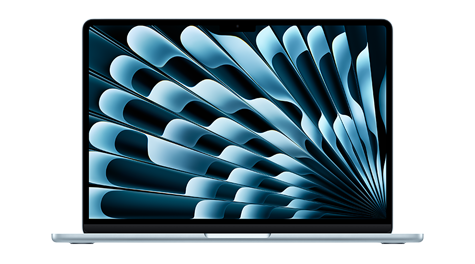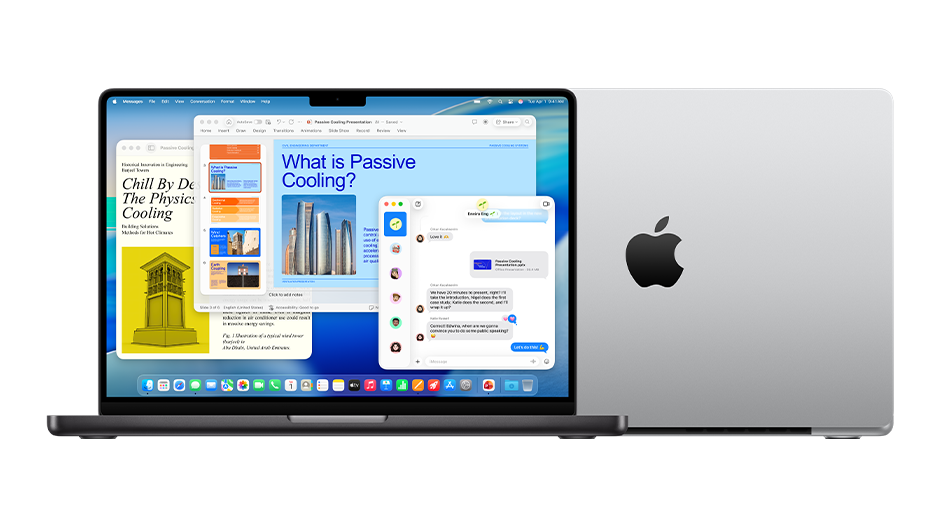

Why lecturers, research assistants and students benefit from Apple devices.
Digitalisation at universities and colleges is in full swing. Courses are no longer held exclusively in lecture halls, but also online — flexibly, networked and efficiently. Apple devices support this development with powerful hardware, intuitive software and an IT architecture that effortlessly enables hybrid teaching formats.
Colleges and universities in transition.
Auch wenn einige Einrichtungen wieder verstärkt auf Präsenzunterricht setzen, steigt die Bedeutung hybrider Lehrangebote weiter: Veranstaltungen werden on- und offline geplant, Inhalte digital bereitgestellt, Seminare sowohl vor Ort als auch zu Hause oder unterwegs durchgeführt. Damit solche Angebote reibungslos funktionieren, braucht es eine moderne Ausstattung und smarte IT-Infrastruktur.
MacBook Air.
13-inch MacBook Air. Designed for Apple Intelligence.
The 13-inch MacBook Air with the M4 chip can do just about anything, anywhere — whether you're studying for university or working on a group project. With Apple Intelligence, a brilliant Liquid Retina display, up to 18 hours of battery life and an impressively thin and light design, it will accompany you through graduation and beyond.


14-inch MacBook Pro. Powered by the M5.
The 14-inch MacBook Pro with M5 delivers incredible speed and powerful on-device AI for virtually any task. With all-day battery life and a super-sharp Liquid Retina XDR display, you can handle your busy schedule and so much more.

Smart IT architecture.
With Apple School Manager and device management, Macs can be put into operation anytime, anywhere, or reconfigured as needed – without direct IT intervention (zero-touch rollout). Hardware, software and services come from a single source and are optimally coordinated, making the Mac particularly energy-efficient. Security and data protection are built in from the outset: every Mac is encrypted, and data is processed locally wherever possible. Integration into existing networks and back-end systems is easy using on-board tools or proven applications.

Energy efficiency & environmental compatibility.
Apple focuses on energy-efficient processors, low emissions during manufacturing and use, and the reuse of materials. The high energy efficiency of Mac computers saves energy costs and conserves resources. Detailed information on energy consumption, recycled materials and take-back processes is available for each product.

Lebenszykluskonzept.
A life cycle concept ensures that university infrastructure remains up to date and prevents budget peaks. Taking residual values into account and using free services such as inventory management and secure data deletion further increases cost-effectiveness.

Sustainability strategy.
Universities and colleges are important players in shaping sustainability. It is important to develop and implement their own strategies – supported by sustainable technology and best practices. Recommendations from the German Rectors' Conference provide helpful guidance in this regard.

Suitable for all subject areas.
Apple devices support students and staff across all disciplines: whether it's large amounts of data in the natural sciences, 3D models in architecture and design, or software development, Macs enable efficient work and structured organisation of everyday university life.
Apple devices help colleges and universities work more efficiently, flexibly and sustainably. They are smart partners for modern, hybrid teaching – powerful, secure and environmentally conscious.
1) Battery life varies by use and configuration. More information can be found at apple.com/batteries.
2) The display on the 16" MacBook Pro has rounded corners at the top. When measured as a standard rectangular shape, the screen is 41.05 cm (16.2"). The actual viewable area is less.
